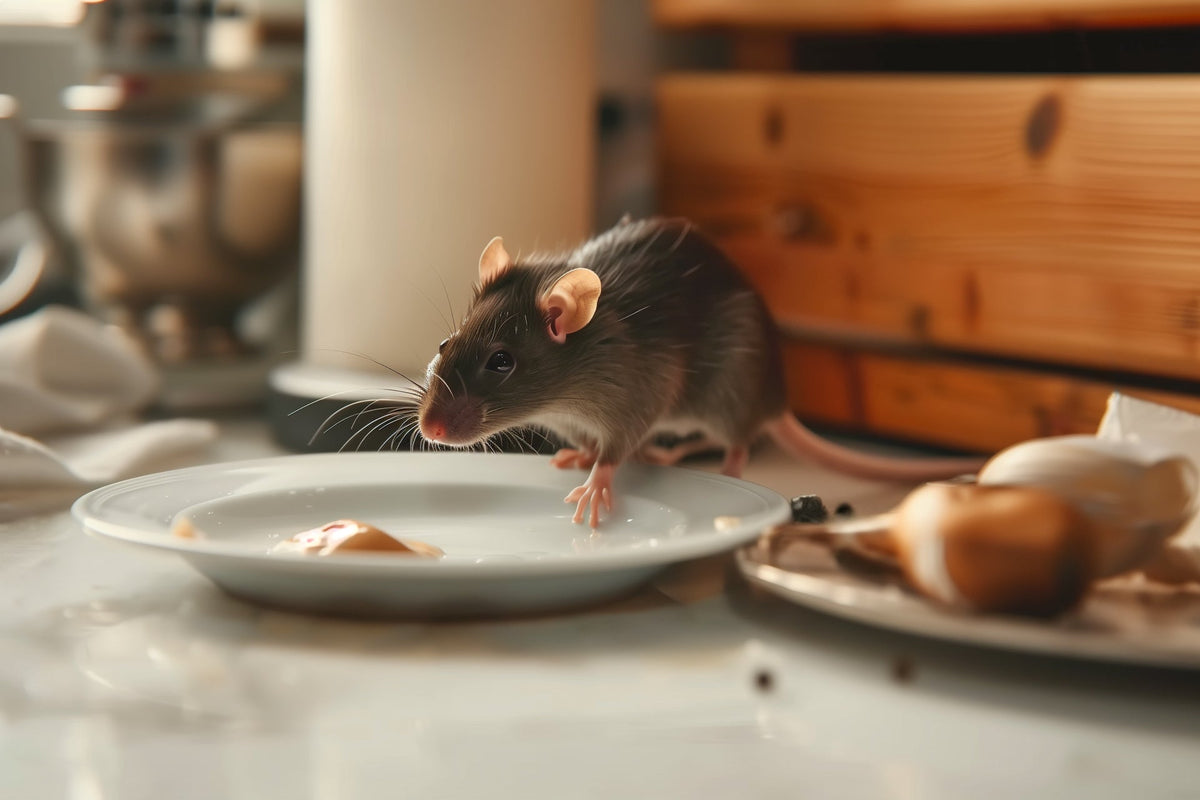
Fighting Rats: Everything You Need to Know About Rat Control
|
|
Time to read 6 min
|
|
Time to read 6 min
Rats are far more than just annoying pests – they pose significant health and structural risks. These adaptable rodents are known to spread disease, damage buildings, and destroy crops.
A rat infestation can quickly get out of control, which is why it is crucial to take effective measures at an early stage. In this article, you will learn everything you need to know about rat control. In addition, we will look at how modern technologies such as IREPELL ® can help to combat rats in a way that is gentle on animals – without chemicals, fragrances and violence.
Rats are predominantly nocturnal and often go unnoticed during the day. It is therefore important to know the signs of rat infestation in order to be able to take countermeasures in good time. This is because rat infestation can cause considerable problems and entail both health risks and material damage.
Typical indications of rat infestation include:
Rats are opportunistic rodents that can quickly adapt to their environment to find food, water, and shelter. For example, a garden can also offer ideal conditions for a rat infestation under certain circumstances.
Rats are omnivores and therefore enjoy a wide variety of food sources:
In addition to food, rats also need access to water. Gardens in particular often offer numerous water sources that are attractive to rats:
Rats seek shelter and safe places to nest and hide. In doing so, they estimate:
Rats take every opportunity to enter buildings where they can find other sources of food and shelter:
Some additional factors that can promote rat infestation in the garden are:
By understanding the causes of rat infestation in the garden and taking targeted measures to minimise food, water and shelter sources, the risk of infestation can be significantly reduced.
Traditional methods of combating rats include not only poison, but also different types of traps. However, this often raises questions about the safety of humans and pets as well as ethical aspects.
Strike traps are mechanical traps that kill rats with a quick strike. They are easy to use and effective, but not the most humane method. Live traps, on the other hand, catch rats alive so that they can be released afterwards. This method is more humane but requires regular review to remove and release the trapped animals in a timely manner.
Rat poison is a widely used method of controlling rats. It often works by inhibiting blood clotting, leading to internal bleeding and eventually death of the animals. However, the use of rat poison carries considerable risks:
In view of the numerous concerns about traditional means of combating rats, technological methods have established themselves as a proven and gentle alternative to effectively expel rats.
Ultrasonic devices emit high-frequency sound waves that are inaudible to humans and pets, but extremely unpleasant to rats. These devices interfere with the orientation and communication of the rats and thus expel them from the affected area.
Ultrasonic devices are silent to humans, environmentally friendly and do not leave toxic residues, making them a safe and effective method of pest control.
IREPELL® provides an advanced, humane and environmentally friendly rat repellent solution. It uses motion sensors and ultrasound to effectively expel rats.
IREPELL® is easy to set up via the intuitive app. Then a push of a button on the device is enough to activate its 360° protective shield. You can also use the app to switch between different animal species to be repelled by IREPELL ®.
In addition to rats, ticks, ants, mosquitoes, moths and cockroaches as well as martens, mice or raccoons can also be kept away. This makes IREPELL® the ideal companion in everyday life – whether at the barbecue, by the pool or during a leisurely picnic.
Take advantage of modern technologies such as IREPELL® to keep rats out in the long term and protect your health and property.
Combine prevention with active control: seal access points, remove food sources and use traps or ultrasound equipment such as IREPELL®.
If you have rats in the garden, keep them clean, remove food scraps and compost heaps, seal possible hiding places, and use live traps or ultrasound equipment.
Seal all access points, eliminate food sources, and use impact traps, live traps, or ultrasonic devices for defense.
Rats are attracted to easily accessible food sources and safe havens, such as open garbage cans, leftovers, and unsealed buildings.
A combination of preventive measures (sealing access, removing food sources) and active control (traps, ultrasound equipment such as IREPELL®) is most effective against rats.
Rats prefer to nest in protected, undisturbed areas such as under stacks of wood, in compost heaps, under sheds or in dense bushes.
Regular cleaning, safe storage of food, the use of odour deterrents (e.g. peppermint oil) and ultrasound equipment such asIREPELL ® keep rats away.
Signs of rat infestation include rat faeces, damage from gnawing, walking paths, scratching noises and damaged food packaging.